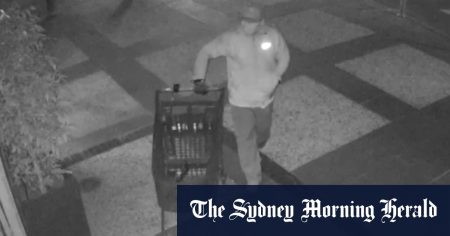A Cold Case Reopened: The Extradition of Keith Lees
The chilling discovery of a woman’s body at the foot of a cliff in 1997 has haunted investigators for decades. Now, nearly 30 years later, a significant breakthrough has emerged. Authorities are poised to extradite Keith Lees, the former partner of the deceased woman, to Brisbane, Queensland, where he is expected to face charges related to her death. This development marks a crucial turning point in a long-dormant cold case, offering a renewed hope for justice and closure for the victim’s family and friends. The impending extradition signals a commitment by law enforcement to pursue justice, regardless of the passage of time. The pursuit of truth and accountability remains paramount, even in the face of daunting challenges presented by the complexities of cold cases.
Unraveling a Decades-Old Mystery
The specifics surrounding the 1997 case remain shrouded in mystery, with authorities withholding key details to protect the integrity of the ongoing investigation. The victim’s identity and the precise circumstances surrounding her demise are yet to be publicly disclosed. The decision to extradite Lees suggests that investigators have amassed substantial evidence linking him to the crime, prompting authorities to take decisive action after years of painstaking detective work. Cold cases often present unique obstacles, including faded memories, dispersed witnesses, and the degradation of physical evidence. Overcoming these hurdles requires meticulous attention to detail, innovative investigative techniques, and a steadfast determination to unearth the truth.
The Significance of Extradition in Pursuit of Justice
Extradition, the legal process of transferring a suspect from one jurisdiction to another to face criminal charges, plays a vital role in ensuring accountability for crimes that transcend geographical boundaries. In this case, Lees’ extradition to Queensland underscores the collaborative efforts of law enforcement agencies across jurisdictions to bring suspects to justice, no matter where they may reside. The extradition process itself can be complex and lengthy, requiring close coordination between legal authorities in different regions and adherence to international treaties and agreements. This intricate process highlights the commitment of legal systems worldwide to upholding justice irrespective of geographical limitations.
Challenges and Complexities of Cold Case Investigations
Cold cases, by their very nature, present formidable challenges to investigators. The passage of time can erode crucial evidence, memories fade, and witnesses become difficult to locate. Furthermore, advancements in forensic science might not have been available at the time of the initial investigation, requiring investigators to revisit old evidence with new technologies and methodologies. The 1997 case likely faced similar obstacles, demanding resourceful investigative strategies and the application of modern forensic techniques to piece together the fragmented remnants of the past.
The Pursuit of Closure and Accountability
The extradition of Keith Lees represents a significant step towards closure for the victim’s loved ones, who have endured decades of unanswered questions and unresolved grief. While the legal process unfolds, the family and friends can find some solace in the knowledge that the pursuit of justice persists. The renewed focus on the case could also serve as a deterrent to potential offenders, reinforcing the message that even crimes committed long ago will not escape scrutiny and accountability. The long arm of the law, as demonstrated by the extradition process, extends across time and borders.
The Promise of Modern Investigative Techniques
Advancements in forensic science, DNA analysis, and investigative technologies have revolutionized the landscape of cold case investigations. These tools offer new avenues for exploring previously intractable mysteries, providing hope that justice can be served even after considerable time has elapsed. While the specific techniques employed in the 1997 case remain undisclosed, it’s conceivable that modern forensic advancements played a crucial role in connecting Lees to the crime. The application of these cutting-edge technologies underscores the ongoing commitment to solving cold cases and bringing closure to victims’ families, regardless of how much time has passed.










